| Company type | Public (S.p.A.) |
|---|---|
| Industry | Fashion |
| Founded | 1964 |
| Headquarters | , Italy |
| Products | Men's tailoring, Classic Italian suits |
| Services | Fashion production, ready to wear, made to measure |
| Website | belvest.com |
Belvest is an Italian menswear fashion brand founded in 1964 [1] in Piazzola sul Brenta from the desire of the founder to respond to a specific need of the time, the "ready-made garment", without abandoning haute couture. Its 300 employees produce ready-to-wear garments that respect the canons of the sartorial tradition. [2]

Fashion is a term used interchangeably to describe the creation of clothing, footwear, accessories, cosmetics, and jewellery of different cultural aesthetics and their mix and match into outfits that depict distinctive ways of dressing as signifiers of social status, self-expression, and group belonging. As a multifaceted term, fashion describes an industry, styles, aesthetics, and trends.
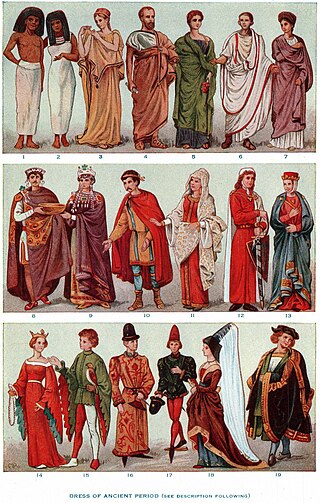
Clothing is any item worn on the body. Typically, clothing is made of fabrics or textiles, but over time it has included garments made from animal skin and other thin sheets of materials and natural products found in the environment, put together. The wearing of clothing is mostly restricted to human beings and is a feature of all human societies. The amount and type of clothing worn depends on gender, body type, social factors, and geographic considerations. Garments cover the body, footwear covers the feet, gloves cover the hands, while hats and headgear cover the head, and underwear covers the private parts.
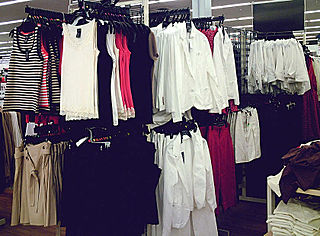
Ready-to-wear (RTW) – also called prêt-à-porter, or off-the-rack or off-the-peg in casual use – is the term for garments sold in finished condition in standardized sizes, as distinct from made-to-measure or bespoke clothing tailored to a particular person's frame. In other words, it is a piece of clothing that was mass produced in different sizes and sold that way instead of it being designed and sewn for one person. The term off-the-peg is sometimes used for items other than clothing, such as handbags. It is the opposite of haute couture.

A chemise or shift is a classic smock type of women's undergarment or dress. Historically, a chemise was a simple garment worn next to the skin to protect clothing from sweat and body oils, the precursor to the modern shirts commonly worn in Western nations.

The Garment District, also known as the Garment Center, the Fashion District, or the Fashion Center, is a neighborhood located in the borough of Manhattan in New York City. Historically known for its role in the production and manufacturing of clothing, the neighborhood derives its name from its dense concentration of fashion-related uses. The neighborhood, less than 1 square mile, is generally considered to lie between Fifth Avenue and Ninth Avenue, from 34th to 42nd Streets.

Brioni is an Italian menswear luxury fashion house based in Rome and specialized in sartorial ready-to-wear, leather goods, shoes, eyewear and fragrance, and provides a tailor-made service (Bespoke).
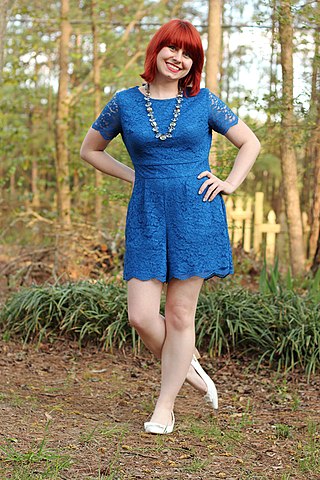
A romper suit, usually shortened to romper, is a one-piece or two-piece combination of shorts and a shirt. It is also known as a playsuit. Its generally short sleeves and legs contrast with the long ones of the adult jumpsuit.

Viktor & Rolf is a Dutch avant-garde luxury fashion house founded in 1993 by Viktor Horsting and Rolf Snoeren. For more than twenty years, Viktor & Rolf have sought to challenge preconceptions of fashion and bridge the divide between fashion and art. Viktor & Rolf have designed both haute couture and ready-to-wear collections. The duo is renowned for their avant-garde designs, which rely heavily on theatrical and performative fashion runways.

Fashion design is the art of applying design, aesthetics, clothing construction and natural beauty to clothing and its accessories. It is influenced by culture and different trends and has varied over time and place. "A fashion designer creates clothing, including dresses, suits, pants, and skirts, and accessories like shoes and handbags, for consumers. They can specialize in clothing, accessory, or jewelry design, or may work in more than one of these areas."
Made-to-measure (MTM) typically refers to custom clothing that is cut and sewn using a standard-sized base pattern. Suits and sport coats are the most common garments made-to-measure. The fit of a made-to-measure garment is expected to be superior to that of a ready-to-wear garment because made-to-measure garments are constructed to fit each customer individually based on a few body measurements to customize the pre-existing pattern. Made-to-measure garments always involve some form of standardization in the pattern and manufacturing, whereas bespoke tailoring is entirely made from scratch based on a customer's specifications with far more attention to minute fit details and using multiple fittings during the construction process. All else being equal, a made-to-measure garment will be more expensive than a ready-to-wear garment but cheaper than a bespoke one. "Custom made" most often refers to MTM.
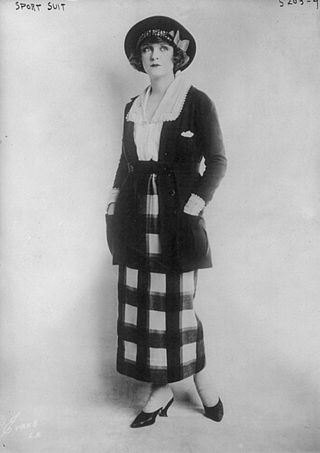
Sportswear is an American fashion term originally used to describe separates, but which since the 1930s has come to be applied to day and evening fashions of varying degrees of formality that demonstrate a specific relaxed approach to their design, while remaining appropriate for a wide range of social occasions. The term is not necessarily synonymous with activewear, clothing designed specifically for participants in sporting pursuits. Although sports clothing was available from European haute couture houses and "sporty" garments were increasingly worn as everyday or informal wear, the early American sportswear designers were associated with ready-to-wear manufacturers. While most fashions in America in the early 20th century were directly copied from, or influenced heavily by Paris, American sportswear became a home-grown exception to this rule, and could be described as the American Look. Sportswear was designed to be easy to look after, with accessible fastenings that enabled a modern emancipated woman to dress herself without a maid's assistance.
Ellesse is an Italian sport apparel company originally founded in 1959 in Umbria, Italy. It has been part of the British Pentland Group since 1987.
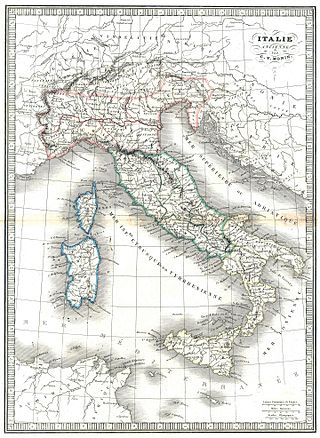
The history of Italian fashion is a chronological record of the events and people that impacted and evolved Italian fashion into what it is today. From the Middle Ages, Italian fashion has been popular internationally, with cities in Italy producing textiles like velvet, silk, and wool. During the Middle Ages and Renaissance, Italian fashion for both men and women was extravagant and expensive, but the fashion industry declined during the industrialization of Italy. Many modern Italian fashion brands were founded in the late 19th and early 20th centuries, and in the 1950s and 1960s, Italian fashion regained popularity worldwide. While many clients of Italian fashion designers are celebrities, Italian fashion brands also focus on ready-to-wear clothes.
Lardini S.r.l. is an Italian fashion house founded in 1978 by three siblings of the Lardini family in Filottrano, Ancona Province. Luigi Lardini is its current creative director; his garments can be distinguished by a signature lapel flower constructed from wool.

Clothing industry or garment industry summarizes the types of trade and industry along the production and value chain of clothing and garments, starting with the textile industry, embellishment using embroidery, via the fashion industry to apparel retailers up to trade with second-hand clothes and textile recycling. The producing sectors build upon a wealth of clothing technology some of which, like the loom, the cotton gin, and the sewing machine heralded industrialization not only of the previous textile manufacturing practices. Clothing industries are also known as allied industries, fashion industries, garment industries, or soft goods industries.

Digital Fashion is a field of fashion design that relies on 3D software or artificial intelligence to produce hyper-realistic, data-intensive digital 3D garment simulations that are digital-only products or digital models for physical products. Digital garments can be worn and presented in virtual environments, social media, online gaming, virtual reality (VR), and augmented reality (AR) platforms. The field contributes to the development of a more sustainable future for the fashion industry It has often been praised as an answer to ethical and creative concerns of traditional fashion by promoting innovation, reducing waste, and encouraging conscious consumption.

Boglioli is a tailoring company originally based in the Italian town of Gambara, Brescia. The showroom is in Via Tortona 31 in Milan. Its signature item of menswear is garment-dyed jackets. The president and CEO of the company is Francesco Russo.

C.P. Company is an Italian apparel brand founded in 1971 by designer Massimo Osti. Initially called Chester Perry by the suggestion of his fashion entrepreneur friend Corrado Zannoni, its name was changed in 1978 following a lawsuit by Chester Barrie and Fred Perry, for the use of their first name and surname.
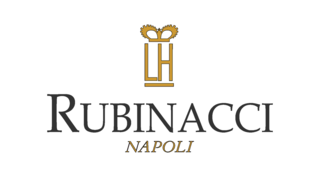
Rubinacci is an Italian luxury clothing company founded in Naples, Italy in 1932 by Gennaro Rubinacci under the name of the London House. The idea Rubinacci had was to create unstructured, unlined jackets meant to be worn outside of the office. Among his early clients were filmmaker Vittorio De Sica and journalist Curzio Malaparte.

GIADA is an Italian fashion brand. It was founded in 2001 in Milan by Rosanna Daolio and bought by the Chinese company Redstone Haute Couture in 2011.